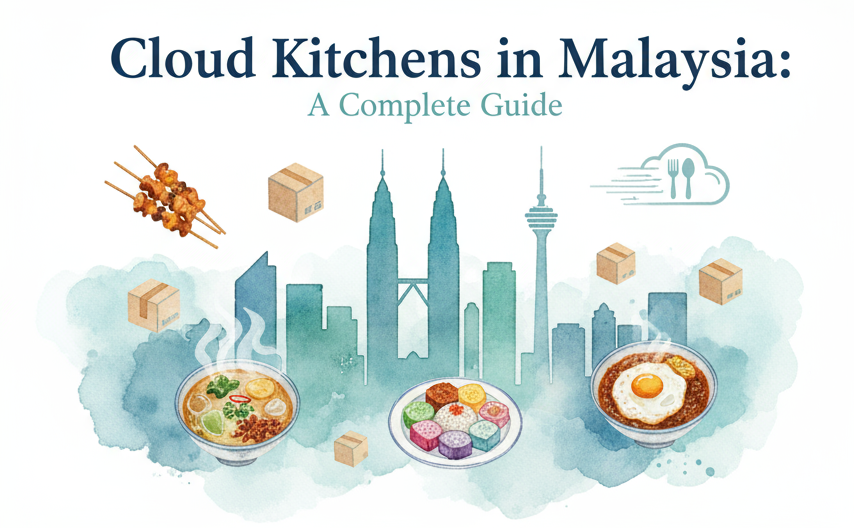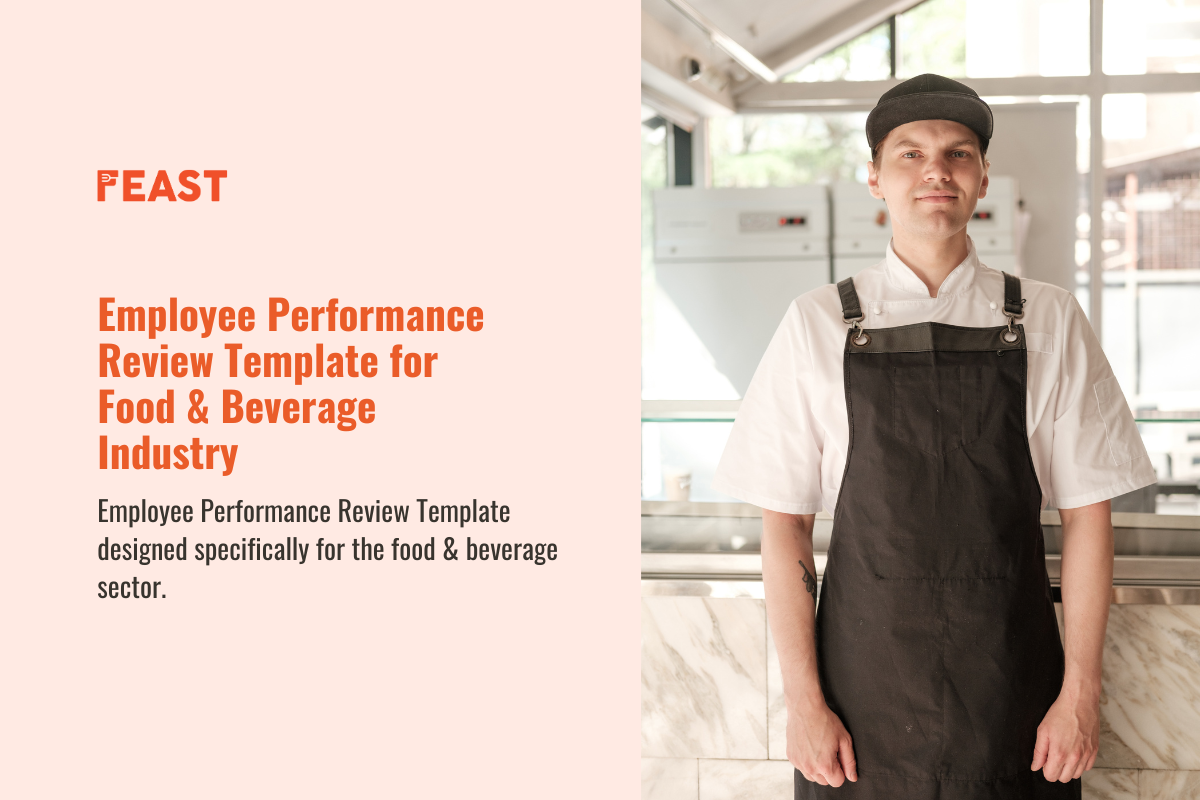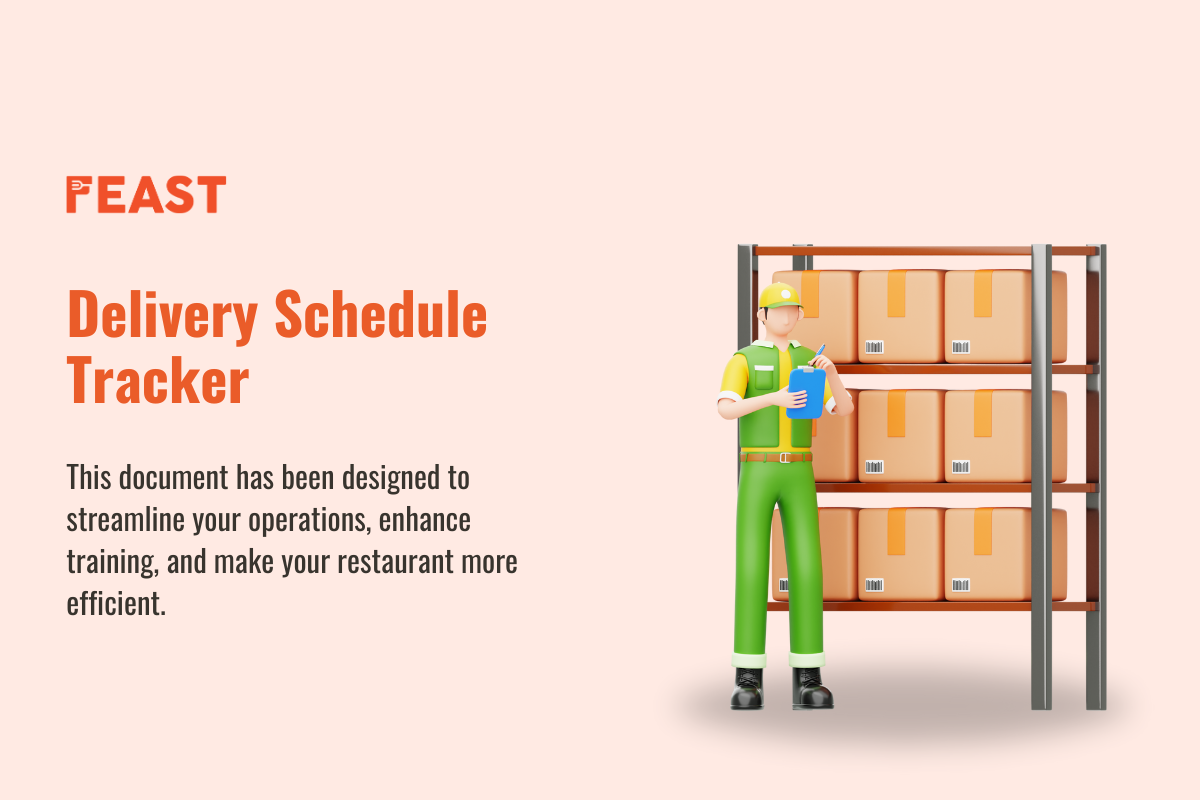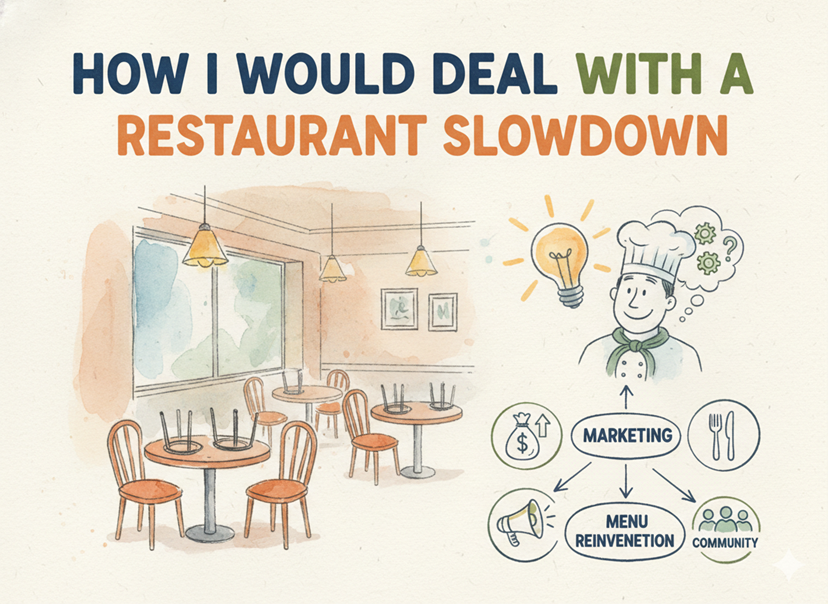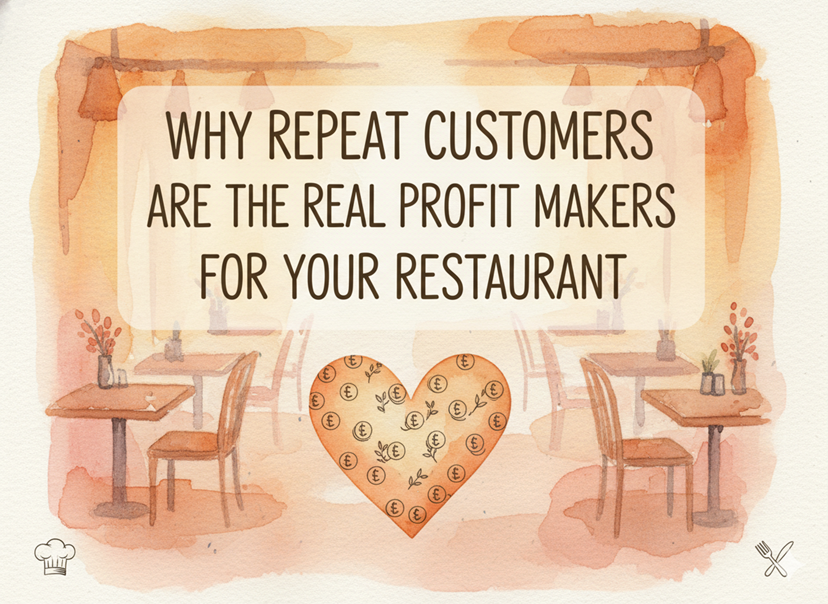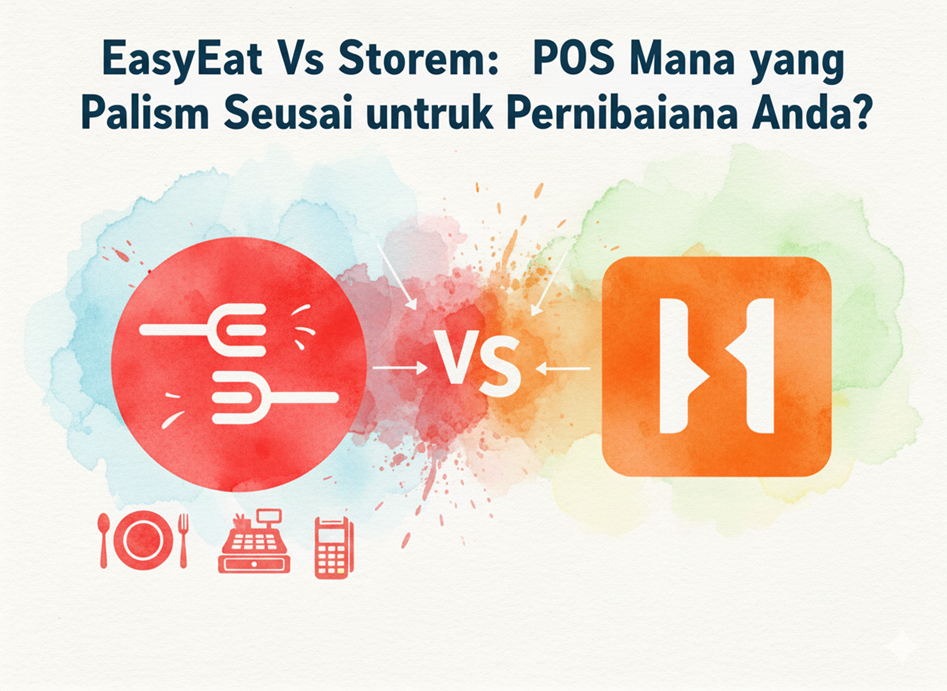If you are thinking about starting a food business without investing in a large dining space, then a cloud kitchen could be the right choice for you. Over the last few years, more people in Malaysia have been ordering food online. According to Statista, revenue from food delivery in Malaysia is expected to reach RM 7.9 billion in 2025. This shows how fast the food delivery industry is growing, and why many food businesses are moving towards cloud kitchens. Let’s go step by step and understand what a cloud kitchen is, how it works in Malaysia, and how you can make it successful.
What is a Cloud Kitchen?
A cloud kitchen is a kitchen built only for delivery. Unlike normal restaurants, you do not need to worry about tables, chairs, or decorations. All you need is a kitchen space where food is prepared and delivered to customers through food delivery services. This model reduces the cost of setting up a business because you don’t have to pay for a dining area or hire many staff.
The focus of a cloud kitchen is only on preparing food that travels well and can reach the customer hot and fresh. You can run multiple brands from one kitchen and serve different kinds of food without needing more locations. That’s why cloud kitchens are becoming popular in Malaysia, especially in big cities like Kuala Lumpur and Penang, where delivery demand is very high.
When choosing delivery partners for your cloud kitchen in Malaysia, you’ll need to look at commission rates, delivery speed, coverage, reliability, promotional tools, and how the customers perceive each app. I’ll go through GrabFood, Foodpanda, ShopeeFood, and AirAsia Food in more detail.
What Delivery Service Partners are Available for Cloud Kitchens in Malaysia?
GrabFood
GrabFood has a very strong reach in many cities (Kuala Lumpur, Johor Bahru, Penang, etc.). It gives you access to a large customer base and many riders. Its fees are usually high, with commission rates reaching around 15-30% per order. The delivery fee paid by customers tends to vary (often depending on distance, time of day, and demand). GrabFood also offers features like “Saver Delivery” (lower delivery cost to customer but perhaps slower) and “Premium Delivery” (faster service for a higher fee).
Foodpanda
Foodpanda is a major player. Commission rates are also in the ballpark of 25-30% per order. Their delivery fees to customers are dynamic, depending on distance and promotions. Foodpanda is good at marketing promotions and has frequent campaigns, which can help your cloud kitchen get exposure. However, rider shortages or delays sometimes occur, especially during peak hours, which can slow down delivery assignments.
ShopeeFood
ShopeeFood is newer but growing fast. It sometimes offers lower commission rates (around 20-25%) when compared to GrabFood or Foodpanda, especially for certain partners. Also, customers tend to like ShopeeFood for its discount campaigns, vouchers, and price-sensitive offerings. That said, the delivery speed may not be as fast in certain areas because rider density is lower, or because the platform is still expanding in those regions. Also, coverage might be more limited outside the big urban areas.
AirAsia Food
AirAsia Food is newer in the game. One of its advantages is the lower commission possibility; in some models, merchants can start on flat rates and move to commission later, depending on performance or agreement. Their delivery range can be large: up to 60 km in some cases. This gives you more flexibility if your customers come from farther away. But being newer, the brand recognition might be weaker than GrabFood or Foodpanda, so you might need to rely more on your own marketing efforts.
How are Cloud Kitchens Different From Normal Restaurants?
Cloud kitchens are different from normal restaurants in many ways. In a traditional setup, you spend money on rent for a dining area, furniture, air conditioning, and staff to serve customers. This increases your costs every month. With a cloud kitchen, you avoid all these expenses and only focus on cooking.
Another difference is customer interaction. In a normal restaurant, customers can see your service, décor, and atmosphere. In a cloud kitchen, customers only judge you by your food and delivery experience. This means your packaging, food quality, and delivery times become your brand image.
Also, with cloud kitchens, you can open in cheaper locations as long as they are near delivery hotspots. For example, instead of paying RM 20,000 monthly rent in a shopping mall, you could operate in an industrial area at half the cost. This flexibility makes cloud kitchens attractive for new businesses.
How to Increase Sales of Your Cloud Kitchen?
To grow your sales in a cloud kitchen, you need to focus on a few key areas. First, work on your online visibility. Most customers will find you on delivery apps, so your food photos, descriptions, and menu design must be attractive. A survey by Upserve showed that 45% of customers are more likely to order if the food photos look appealing.
Second, make sure your delivery is fast. If food arrives late, even good taste cannot save a bad review. You can partner with multiple delivery services to reduce waiting time.
Third, use promotions smartly. Offering discounts like “Buy 1 Free 1” during lunch hours can help you get more orders. Once customers try your food, they may come back even without discounts.
Finally, collect customer feedback and improve. If people say your packaging leaks or food is cold, fix it immediately. In cloud kitchens, small mistakes can quickly affect your sales because you do not meet customers face-to-face.
Mistakes to Avoid During Cloud Kitchen Delivery
While cloud kitchens are a great idea, many people fail because of simple mistakes. One common mistake is poor packaging. If your food spills or becomes soggy during delivery, customers will not order again. Always invest in good, heat-resistant packaging.
Another mistake is offering too many dishes. It is better to focus on a smaller menu and make sure every dish is perfect. When you try to serve everything, your kitchen gets messy, and the quality drops.
Also, many cloud kitchens fail to check their delivery radius. If you accept orders that are too far, the food may arrive late and cold. Keep your service area limited to places where you can deliver in 30 minutes or less.
Lastly, ignoring marketing can hurt you. Just being on delivery apps is not enough. You need to promote your kitchen on social media, run ads, and work on your branding so that customers remember you.
How can EasyEat Help With Increasing Sales?
If you’re trying to manage a cloud kitchen without a restaurant management system, then it is going to be very difficult for you. The EasyEat restaurant management system can help you track every order in your restaurant. If you have multiple channels for food ordering, then EasyEat can help you with the segregation of all of the orders. Dine in, delivery, take away, all these would be displayed separately to avoid confusion. Moreover, with EasyEat, you can manage your inventory very well so that you can stay prepared for busy hours.

